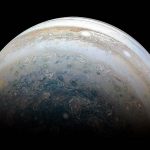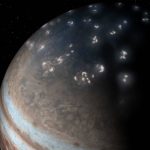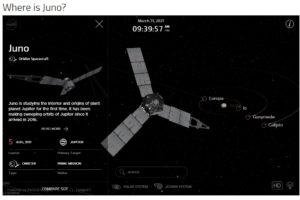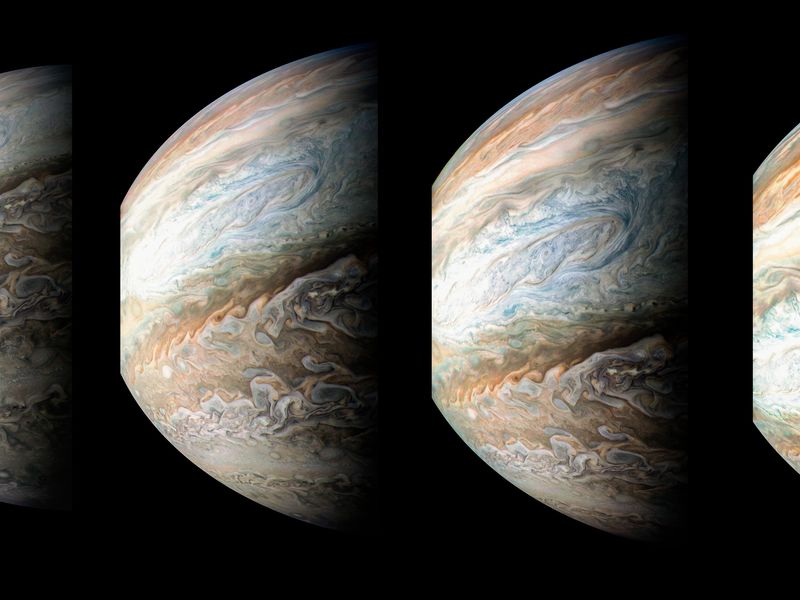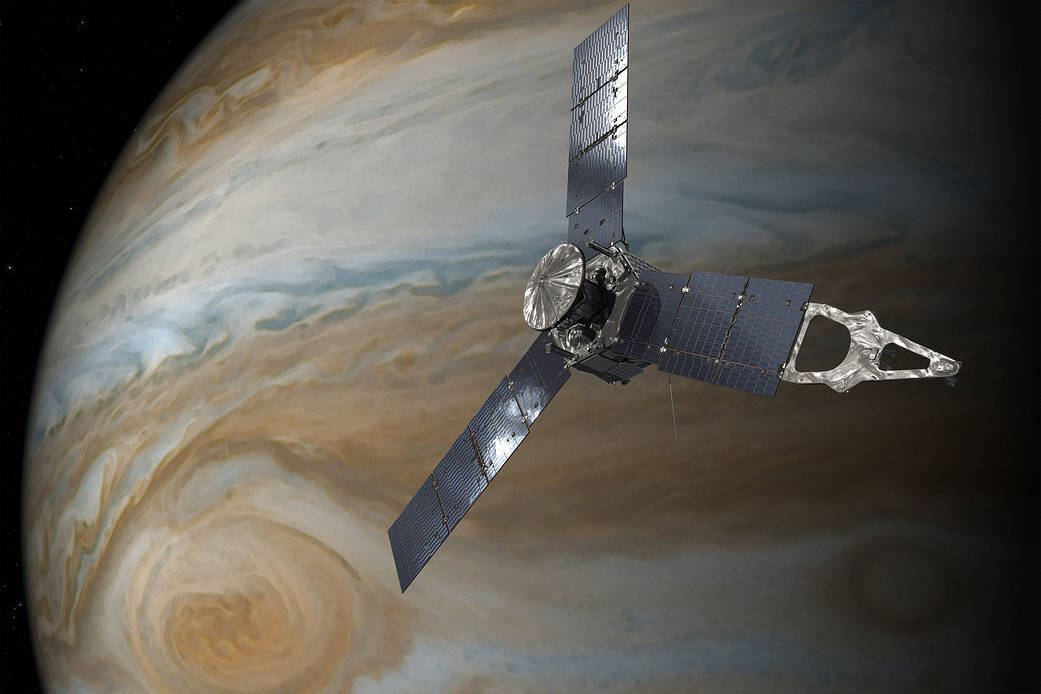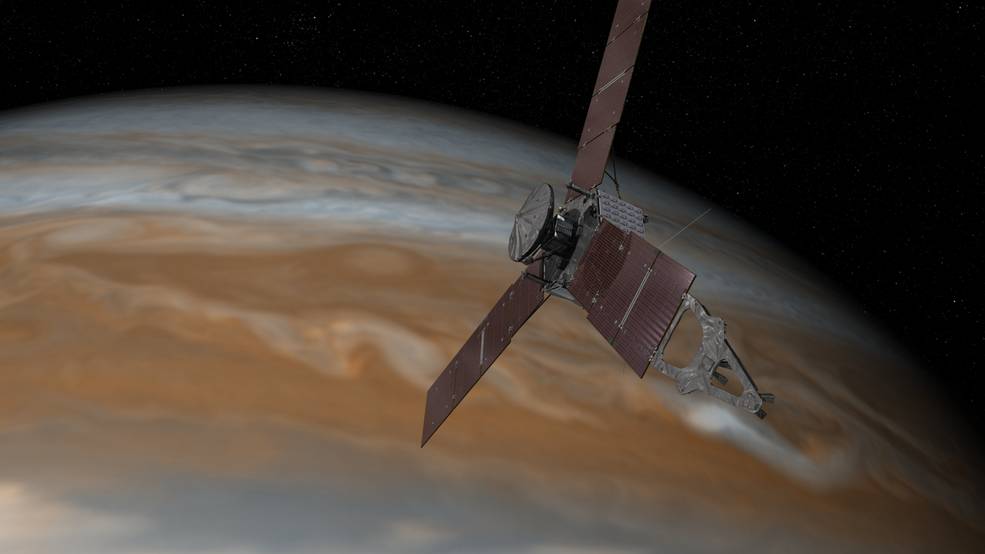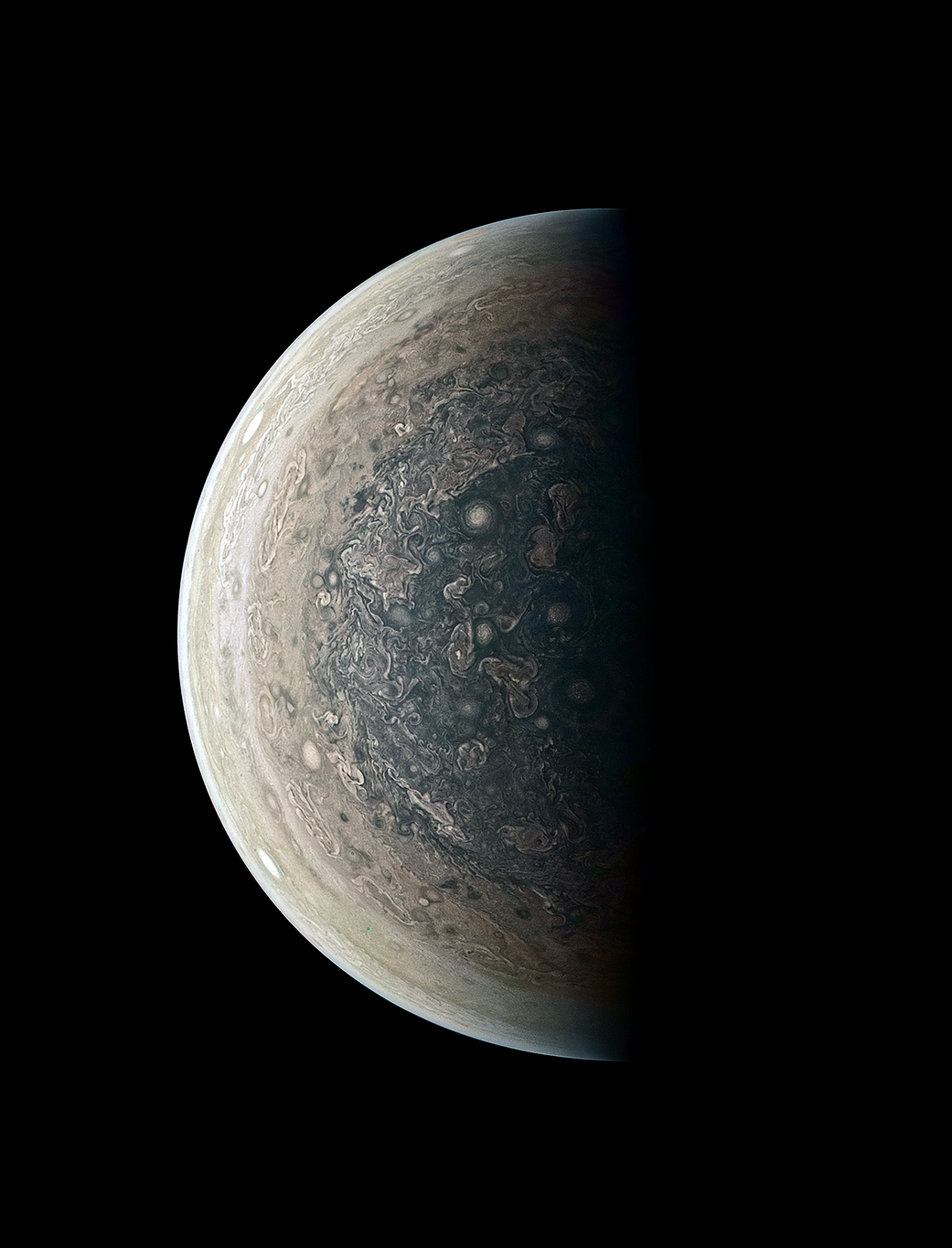During its continued mission, NASA’s Juno spacecraft will maintain its 53-day polar orbit around Jupiter. At its closest, Juno passes within 3,000 miles (5,000 kilometers) of Jupiter’s cloud tops once during each 53-day orbit. At the high end of each orbit, Juno is about 5 million miles (8-million kilometers) from the planet – which is just beyond the orbit of the Jovian moon Themisto.
Credits: NASA/JPL-Caltech
NASAの継続中のミッションである木星探査機ジュノーは木星の周囲53日間の極軌道を維持しています。ジュノーは最も近いところで53日に1度木星の大気上空3,000マイル(5000キロメートル)の雲頂を通過します。ジュノーの軌道の最も遠い地点では木星から約500万マイル(800万キロメートル)離れています。これは木星の衛星テミストの軌道の上のところにあたります。
今回のNASAの発表を要約すると
当初の計画では、NASAの木星探査機ジュノーは木星を14日の軌道で周回して科学探査をするものでした。
今回53日というかなり長い軌道に変更し、探査活動期間も2021年7月までとなりました。
この軌道変更により、NASAは木星から放射される磁気状態を長い距離で調査することができるようになったとしています。
一方で、軌道が長くなることで当初予定していた木星の近接観測によるデータ収集に時間がかかることとなり、調査分析にFY2022までかかるとしています。
つまり私たちがジュノーミッションの詳細観測成果を知るのが2023年3月末まで伸びてしまうかもしれません...
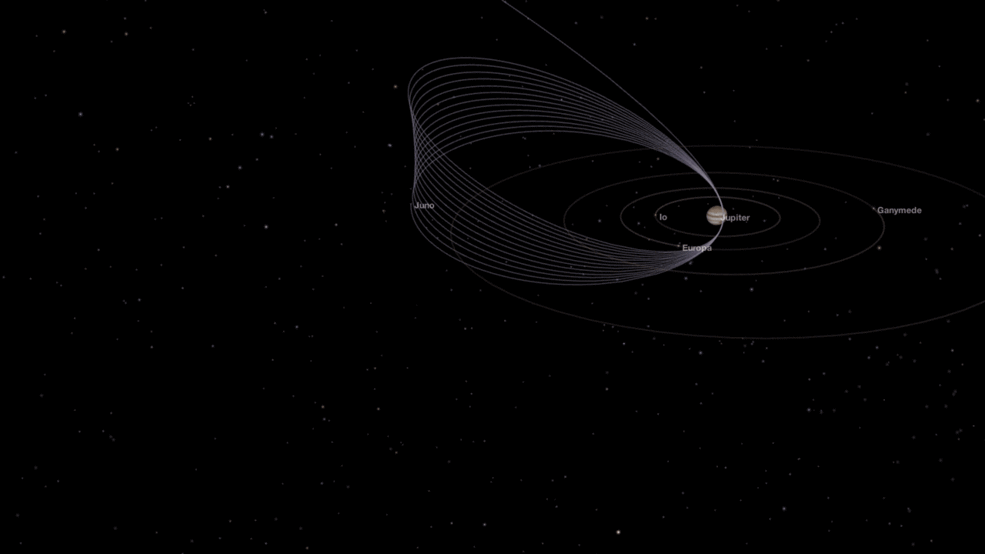
NASAオリジナル記事と和訳
NASA Re-plans Juno’s Jupiter Mission
NASA has approved an update to Juno’s science operations until July 2021. This provides for an additional 41 months in orbit around Jupiter and will enable Juno to achieve its primary science objectives. Juno is in 53-day orbits rather than 14-day orbits as initially planned because of a concern about valves on the spacecraft’s fuel system. This longer orbit means that it will take more time to collect the needed science data.
NASAは、ジュノーの科学探査活動を2021年7月まで延長することを承認しました。これにより木星周回軌道で41ヶ月間におよぶ軌道が追加され、主だった科学探査活動のほとんどを達成することができます。 ジュノー探査機の燃料システムのバルブについての懸念から、当初予定していた14日間の軌道ではなく53日間の軌道で木星を周回しています。 この長い軌道は、必要な科学データを収集するのに時間がかかることを意味しています。
An independent panel of experts confirmed in April that Juno is on track to achieve its science objectives and is already returning spectacular results. The Juno spacecraft and all instruments are healthy and operating nominally.
独立した専門家集団が、4月にジュノーが科学探査目的を達成できる軌道にあり、既に驚くべき結果を得ていることを認めています。ジュノー探査機と搭載している全ての観測機器は正常に機能を継続しています。
NASA has now funded Juno through FY 2022. The end of prime operations is now expected in July 2021, with data analysis and mission close-out activities continuing into 2022.
NASAは現在、2022年度までのジュノーに関する予算を確保しています。2021年7月には探査活動の終了が予定されています。その後データ分析とまとめの活動は2022年まで続きます。
“With these funds, not only can the Juno team continue to answer long-standing questions about Jupiter that first fueled this exciting mission, but they’ll also investigate new scientific puzzles motivated by their discoveries thus far,” said Thomas Zurbuchen, associate administrator for NASA’s Science Mission Directorate in Washington. “With every additional orbit, both scientists and citizen scientists will help unveil new surprises about this distant world.”
「これらの予算でジュノーチームは、木星に関する長年の疑問に答え、エキサイティングなミッションを完遂することができるだけでなく、これまでの発見によってもたらされた新しい科学的課題についても調査する予定です」とワシントンのNASA科学ミッション部長のThomas Zurbuchenが言いました。「軌道を周回する度に、NASAと民間の科学者たちがこの遠い世界についての新たな驚きを発表することになるでしょう。」
“This is great news for planetary exploration as well as for the Juno team,” said Scott Bolton, principal investigator of Juno, from the Southwest Research Institute in San Antonio. “These updated plans for Juno will allow it to complete its primary science goals. As a bonus, the larger orbits allow us to further explore the far reaches of the Jovian magnetosphere — the region of space dominated by Jupiter’s magnetic field — including the far magnetotail, the southern magnetosphere, and the magnetospheric boundary region called the magnetopause. We have also found Jupiter’s radiation environment in this orbit to be less extreme than expected, which has been beneficial to not only our spacecraft, but our instruments and the continued quality of science data collected.”
サンノゼのサウスウエスト研究所(Southwest Research Institute)のジュノーの主任研究員スコット・ボルトン(Scott Bolton)は、「これらは惑星探査とジュノーチームhwの素晴らしいニュースです。」と言いました。 「ジュノーの最新計画は、主な科学的目標を達成することを可能にします。さらにボーナスとして、より大きな軌道が木星の磁気圏がもたらす影響をさらに遠方(磁気圏境界領域が磁気圏断層と呼ばれている遠方磁気圏、南磁気圏)まで探査することを可能にするのです。すでにこの軌道上の木星の放射能環境は予期していたほど極端ではないことがわかっており、探査機だけでなく観測機器や収集された科学データの品質を保つことができそうです。」
Juno will make its 13th science flyby over Jupiter’s mysterious cloud tops on July 16.
ジュノーは、7月16日に木星の神秘的な雲頂に13回目の最接近をおこない科学計測を実施します。
NASA’s Jet Propulsion Laboratory, Pasadena, California, manages the Juno mission for the principal investigator, Scott Bolton, of the Southwest Research Institute in San Antonio. Juno is part of NASA’s New Frontiers Program, which is managed at NASA’s Marshall Space Flight Center in Huntsville, Alabama, for NASA’s Science Mission Directorate. The Italian Space Agency (ASI), contributed two instruments, a Ka-band frequency translator (KaT) and the Jovian Infrared Auroral Mapper (JIRAM). Lockheed Martin Space, Denver, built the spacecraft.
More information about Juno is available at:https://www.nasa.gov/juno、https://www.missionjuno.swri.edu
More information on Jupiter is at:https://www.nasa.gov/jupiter
The public can follow the mission on Facebook and Twitter at:https://www.facebook.com/NASAJuno
DC Agle
Jet Propulsion Laboratory, Pasadena, Calif.
818-393-9011
agle@jpl.nasa.gov
JoAnna Wendel
NASA Headquarters, Washington
202-358-1003
joanna.r.wendel@nasa.gov
Deb Schmid
Southwest Research Institute, San Antonio
210-522-2254
dschmid@swri.org
2018-130
Last Updated: June 7, 2018
Editor: Tony Greicius

